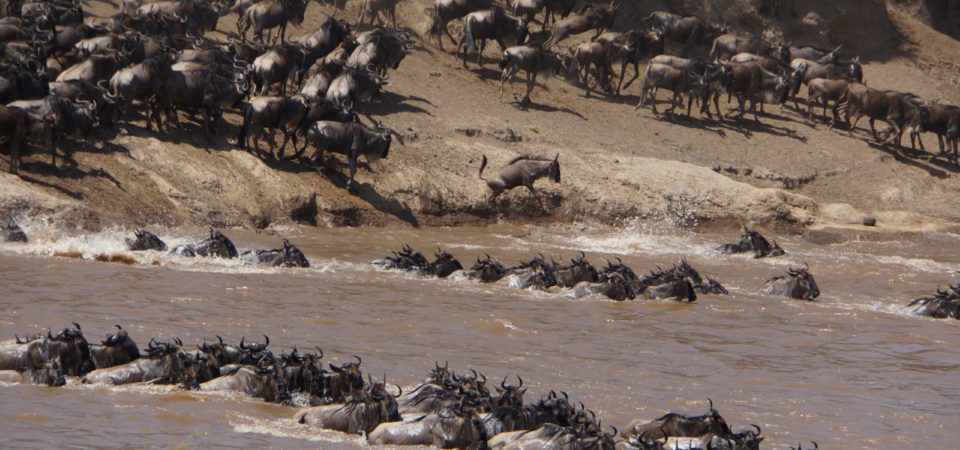When environmentalists think about the problems caused for biodiversity by mineral exploration and extraction, they often think about the rich tropical forest of Yasuni National Park in Ecuador threatened by oil development, or about seabirds, fish, and dolphins wiped out by tanker accidents or incompetent drilling. If not focusing on oil as the key mineral, one’s thoughts might turn to New Guinea forests destroyed by the giant Ok Tedi copper and gold mine. That mine dumped 80,000 tons of tailings containing copper, zinc, cadmium, and lead directly into the Ok Tedi and Fly rivers (Papua New Guinea’s second largest river system), polluting them and the lands of tens of thousands of poor farmers. The result was depleted fish stocks and some 800 square miles of forest poisoned, and the destruction continues.
Some of the most critical mining-related destruction is caused by the scramble for rare minerals, but it is less familiar than the chase after oil, or copper or gold. A little-known example is the growing need for coltan, a metallic ore from which tantalum, an essential material used in cell phones, is extracted. What it threatens is not an endangered species but rather a biological spectacle generated by an abundant one, the wildebeest or gnu (Connochaetes taurinus). We have done field work in Africa many times and have seen thousands of wildebeests. Despite our familiarity with this interesting and abundant antelope, we were stunned by the spectacle of their famous migration. It’s the last great mammal migration on the planet other than that of Canadian caribou (at least until Homo sapiens begins to flee sea level rise and starvation by the hundreds of millions).
In September we saw many groups of gnus moving around the northern Serengeti plain of Tanzania, and one day we watched a huge mob of gnus gathering on the bank of the crocodile-loaded Mara River looking repeatedly as if they wanted to cross it. This was the beginning of the migration southward as the seasonal rains spread south and fresh grass sprouted in their wake. We saw much milling about, “after you Alphonse” behavior at the river’s edge, then a retreatto more grazing. We had seen this behavior several times over a few days, but until that morning we had only seen one crossing start with about 50 swimmers making it before an apparent crocodile scare aborted the crossing. Then, after a gathering herd of about 4000 gnus wandered seemingly aimlessly and indecisively for a couple of hours on the opposite side of the Mara, suddenly they started plunging down the steep, high banks of the river in a huge swarm. Some were leaping over their fellows into the water as they swam swiftly across in up to four lines, sometimes single file, sometimes three or four abreast, and scrambled up the bank under our noses. It was all over in a few minutes; after about 3000 had crossed, something spooked them, and the remainder halted and then dispersed. The local already well-fed crocs didn’t go after them. With all the tumult and noise (a cacophony of grunts, transliterated into the “gnus” that gives them their name) it was perhaps the most spectacular piece of action we’ve ever witnessed in nature.
Trying to figure out the evolution of this time-consuming, energy-intensive, on-and-off movement is quite challenging, but predator-saturation is clearly part of the strategy. It’s reminiscent of the emergence of periodical cicadas or the formation of vast nesting colonies by now-extinct passenger pigeons. Both of these phenomena had evolved to make it impossible for predators to devour a substantial portion of the prey population, or to build their own populations based on the prey’s temporary abundance.
Sadly the whole spectacle may now be threatened. Although the excuse for building another road thru the Serengeti was to better connect eastern and western parts of the country, the real reason was to expedite mineral exploitation. But building a road across the Serengeti might have had serious consequences for the migration and/or the experience of ecotourists hoping to see it. Pressure from conservation groups and the tourist industry blocked the highway at least temporarily, but coltan is an extremely valuable commodity today, and there will probably be continued pressure to facilitate its extraction and transport. This could become especially serious with mining interests preparing to jump into the Congo if and when the horrific warfare there ends. The economic advantages of speeding the transport of minerals across Tanzania to ocean ports will be difficult for developing Tanzania to resist, but hopefully future roads connecting east and west can be routed around the Serengeti – especially if the rich countries that are major users of the minerals develop an ethical code to help finance it.
MAHB-UTS Blogs are a joint venture between the University of Technology Sydney and the Millennium Alliance for Humanity and the Biosphere. Questions should be directed to joan@mahbonline.org.
MAHB Blog: https://mahb.stanford.edu/blog/resources-rare-minerals-versus-biodiversity
The views and opinions expressed through the MAHB Website are those of the contributing authors and do not necessarily reflect an official position of the MAHB. The MAHB aims to share a range of perspectives and welcomes the discussions that they prompt.
